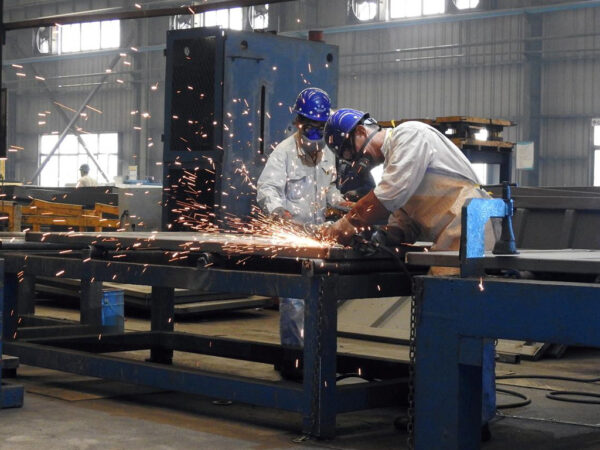Engineering Post Report
Pakistan’s Large Scale Manufacturing (LSM) sector has as many as two dozen groups or sub-sectors analysis and performance of some of these during the period July 2021-March 2022 for which information is now available from official sources concerned is being presented here for want of space. remaining LSM sub-sectors will be covered in these columns later on please.
LSM groups or sub-sectors include Food, Beverages, Tobacco, Textile, Wearing Apparel. Leather Products. Wood Products, Paper & board, Coke & Petroleum Products , Chemicals and Chemical Products, Fertilizers, Pharmaceuticals,
Rubber Products, Non-Metallic Mineral Products, Iron & Steel Products , Fabricated Metal, Computer, electronics and Optical Products, Electrical Products, Machinery and Equipment, Automobiles, Other Transport Equipment, Furniture and Other Manufacturing such as football and other sports goods.
Textile sector weight was reduced from 20.9 to 18.18 in Quantum Index of Manufacturing (QIM) 2015-16 but still this was the highest among all sectors of LSM.
The sector grew by 3.2 per cent during July-March FY2022 as compared to 8.0 per cent in the same period previous year. Major growth originated from woolen segment production with the highest surge of 38.9 per cent in blankets, 27.9 per cent growth in woolen and carpet yarn and 19.1 per cent in woolen and worsted cloth respectively. Production of yarn and cloth showed marginal growth of 0.7 and 0.3 per cent respectively.
Congruent production units, invariant capacity and elevated cotton prices owing to demand and supply gap disruptions moderated the growth momentum of the cotton sector. Depreciation of rupee also restrained the production of jute, as most of the raw material is imported from Bangladesh . However, surge in imports of textile machinery, rising demand for concessionary financing from textile firms and high exports of this sector showed a sizeable improvement in the textile sector.
As per Pakistan Bureau of Statistics (PBS), textile machinery imports reached the level of US$ 621.7 million from US$ 377.5 million sowing an increase of as high as 64.7 per cent during the period under report.
According to the State Bank of Pakistan, out of Rs 202.9 billion of total financing of Long Term Finance Facility (LTFF) and Temporary Economic Refinance Facility (TERM) under fixed financing Rs 94.6 billion were borrowed by textile sector which accounted to as much as 46.6 per cent of total financing to the private sector business.
Wearing apparel has been separated from textile with 6.08 weight i QIM showed the growth of 34 per cent against the contraction of 35.6 per cent. The sector had gained traction local as well as in the international market as garments production grew at 34.0 per cent during the period, The export of garments also escalated with 33.9 per cent growth in terms of quantity during the period under report.
Coke & Petroleum Products marginally grew by just 2.0 per cent during the period under report against 12.3 per cent in the same period previous year. High global energy prices depressed the overall growth momentum . However, pickup in the economic activities especially automobile and resultant increase in transportation activities and oil sales which showed an increase of 14.9 per cent during the period under review clocking at 16.3 million tones partially offsite the import of high fuel prices. Besides production of jute batching oil, jet fuel, kerosene oil , diesel and Solvant Naptha remained encouraging as demand spurred from transportation.
Iron and Steel production jumped by 16.5 per cent during the period under review against the contraction of 8.6 per cent in the same period previous year. Billets/Ingots, mainly used in the construction industry, grew by 32.8 per cent and H/C.R.Sheets/Strips/ Coils) Plates increased by 7.9 per cent. Both reflected the growth momentum in the automobile and construction-allied sectors. Non-metallic Mineral Products inched up to 1.1 per cent as compared to 18.5 per cent increase during the same period of the previous year.
Chemicals sector is divided into two components i.e. chemical products and fertilizers with the total weight of 6.48 in QIM. The chemical products showed the growth of 15.2 per cent against 14.5 per cent in the same period previous year. Sulphuric acid, hydrochloric acid, soda ash, and toilet soaps remained the main major contributors to overall growth of chemicals. On the other hand, Fertilizers production showed a meagre growth of 3.3 per cent increase in the last year.
Pharmaceuticals growth witnessed a dip of 0.4 per cent during July-MarchFY2022, against the growth of 10.55 per cent the previous year, triggered by hefty decline observed in capsules, injections, tablets and galenicals. Electrical equipment also declined by 1.1 per cent against the hefty shrink of 17.1 per cent.
Paper and Board production increased by 8.5 per cent during the period under report as compared to dipl of 0.6 per cent last year. Rubber Products nosedived by 20.6 per cent during July-MarchFY2022 as compared to 13.1 per cent growth in the same period of the previous year. Wood Products jumped by as high as 157.5 per cent as compared to contraction of 46.2 per cent last year. Production of Plover remained the sole contributor to overall pick up in the output of wood. Furniture production drastically increased by as much as 301.8 per cent against 71.7 per cent in the same period last year.
Other manufacturing , particularly footballs production substantially increased by 37.8 per cent as compared to 29.8 decline in the corresponding period last year. The sector picked up the growth by pent-up demand in the international market and marked a growth of 40. 3 per cent in exports .
Production figures of selected industrial items of Large-Scale Manufacturing such Deepfreezes, Jeeps and Cars, Refrigerators Upper Leather, Cement , Liquids/syrups, Phosphatic fertilizers, Tablets, Cooking oil, Nitrogen fertilizers, Cooking oil, Vegetable ghee, Cotton yarn, Sugar, Tea blended, Cigarettes are also available but not being mentioned here for want of space, please.






